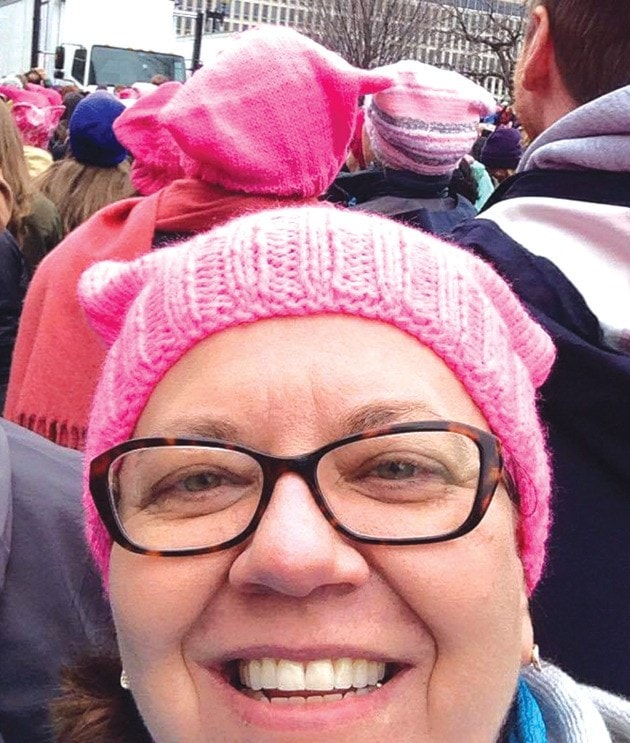At least half a million people took part in the historic Women’s March on Washington on January 21. It was a stunning show of protest on the first full day of the Trump administration. A sea of peaceful protestors wore pink hats as crowds poured into the streets of downtown DC, easily outnumbering those attending the inauguration the day before. In support of women’s rights and other causes including immigration reform, health care reform, protection of the natural environment, LGBTQ rights, racial justice, freedom of religion, and for workers’ rights, the Women’s March on Washington (and at least 408 sister rallies in the U.S. and 168 in 81 other countries) were aimed at Donald Trump and especially at his statements and positions. The march in DC was the largest one-day protest in U.S. history, with worldwide protests in support of the March on Washington numbering almost five million. Creston Psychologist Deanna Rumohr, on leave from School District 8 to pursue her doctorate in Philadelphia, discussed her experiences and why she felt it necessary to take part in the march.
“I initially decided to go to support my classmates. I’d spent the last year and a half in Philadelphia and I saw how the result of the election shocked and angered the whole class,” says Rumohr. “Both men and women were concerned about what was going to happen under the presidency of Donald Trump.”
Having loaded into a van, Rumohr and her classmates traveled two hours, spent the night in Baltimore, and took the metro the next morning into downtown Washington. “We were really energized during our travels, but none of us knew how big it was going to be or how many other support marches were planned around the world,” says Rumohr. “We got downtown at 8:00 a.m. and already there were lots of people and such a positive energy. The speakers started a couple hours later, and we were lucky to be close to the stage. We had packed a lunch and water because we knew we didn’t want to leave. We knew it was going to an historic event.”
The Women’s March speakers included Gloria Steinem, Michael Moore, Scarlett Johansson, Ashley Judd, and at least twenty others. “I was there for six hours before we marched, listening to the speakers,” says Rumohr. “Gloria Steinem spoke about democracy for all human beings, and not being ranked by race, gender, class or any other label. Michael Moore talked about 100 days of resistance for Trump’s first 100 days of his presidency.”
With her classmates, Rumohr marched down Pennsylvania Avenue at 3:30 p.m. “It was so amazing, and I never felt unsafe. It was all very peaceful and friendly,” says Rumohr. “It occurred to me that what we were fighting against was the same kinds of oppression that my grandparents fought against. It was disheartening to find myself fighting the same fight all over again. We marched not just for women, but for all of humanity.”
Passing the Canadian embassy en route made Rumohr think of home and how proud she was to be Canadian. “While many of us have grievances against our government, we are not fighting for basic human rights like they are in the United States. As funding for scientific research is stripped and so many people are following Trump’s ideology of hate and division, I am scared of the next four years but so thankful to be Canadian.”
The outpouring of activism generated national media attention but the true test of the demonstrations will be whether the energy and passion can be channeled into a longer fight. Following the march, the organizers of the Women’s March on Washington posted the 10 Actions for the First 100 Days campaign. “The march was only the beginning,” says Rumohr. “I know there will be more demonstrations and the organizers will keep the momentum going. I’m sure of it.”
